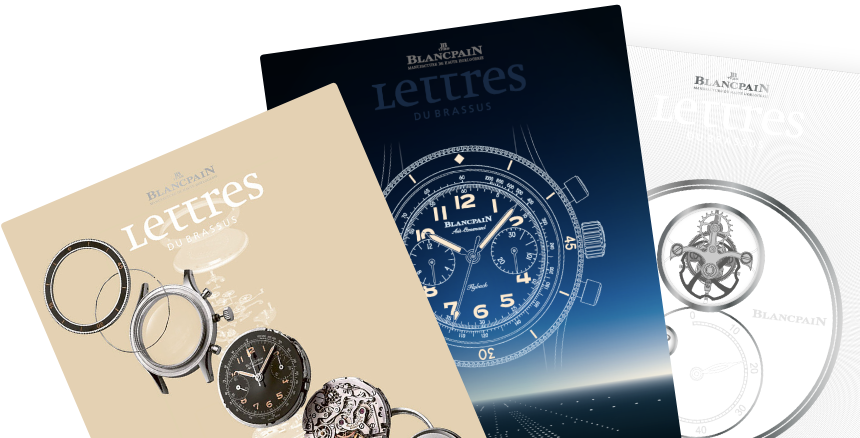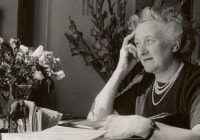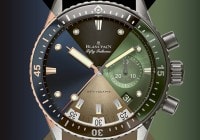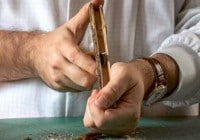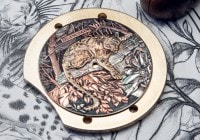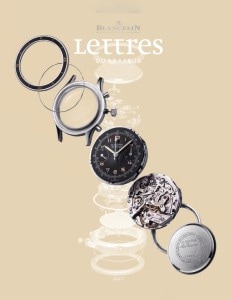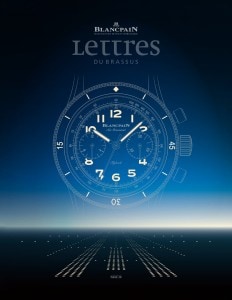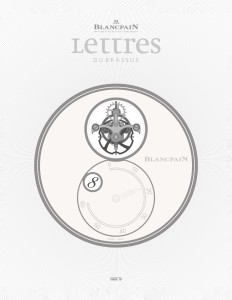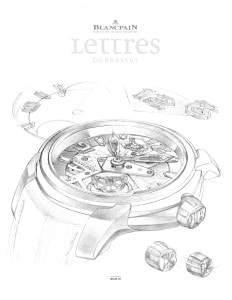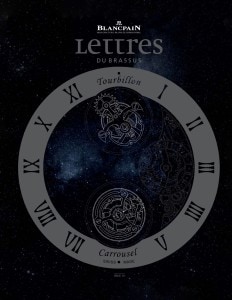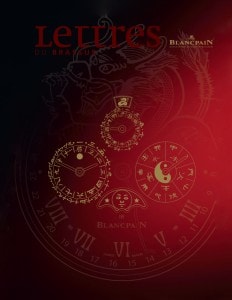
Search in Issues
Chapters
List of parts
Chapter 2
A WOMAN of consequence
She was the first woman CEO/Owner of a Swiss watch house who grew and nurtured Blancpain, guiding it through multiple crises including the Great Depression, a World War, the death of her business partner, and the emergence of quartz watches.
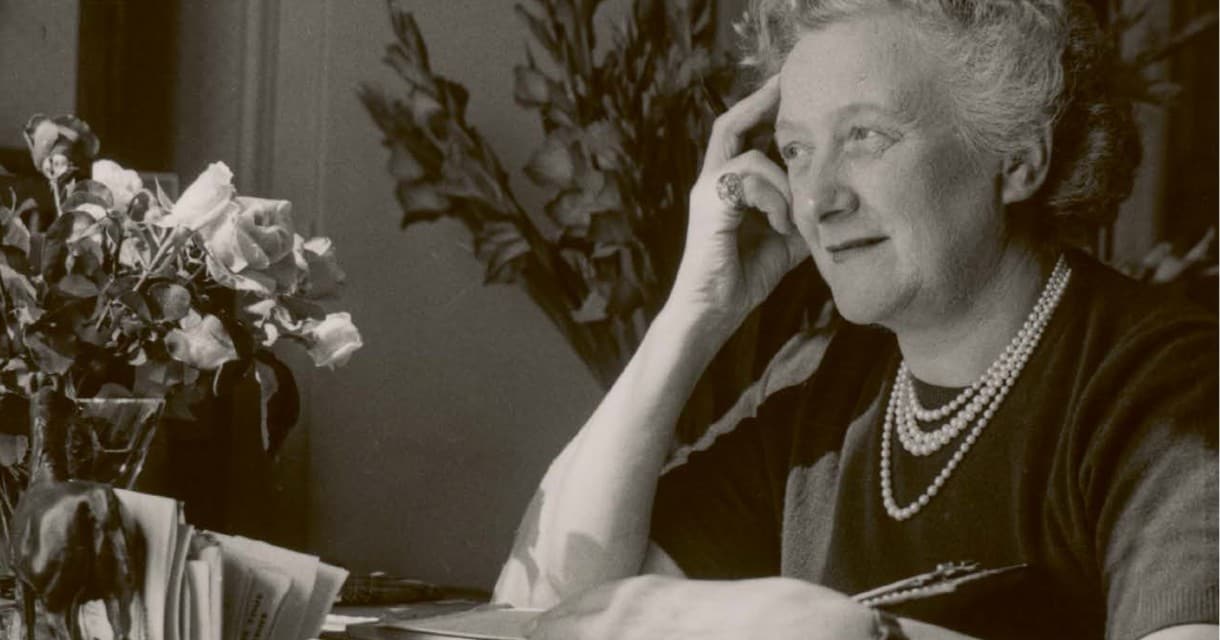
HER ACHIEVEMENTS WERE MANY, including the Ladybird and the Fifty Fathoms, yet she never had the right to vote during her lifetime.
Berthe-Marie Fiechter, known to all as “Betty”, began her working career in 1912 just a scant two years before the outbreak of World War I. Persevering through that war, the one that followed, the Great Depression, the death of her business partner, her own battles with cancer, and the beginning of the quartz crisis that suffocated nearly mortally the Swiss watch industry, she was a visionary who nurtured Blancpain, creating pioneering timepieces such as the Fifty Fathoms and Ladybird and growing it into a movement powerhouse. She was the first woman CEO/owner of a Swiss watch house, yet during her lifetime, universal suffrage for women in Switzerland had not yet been established.
Blancpain’s birthplace and its home for more than two centuries thereafter was the remote Swiss village of Villeret. Today, visitors to Villeret who venture up the north hillside into the neighborhood of Les Planches will pass by the monument to her life, her bust gazing out across the Suze river valley sitting upon a pedestal marking her birth in 1896 and her passing in 1971.Though she has been gone for nearly a half century, the elders of Villeret honor her still. No history of Blancpain can be written without devoting a major chapter to her career. Betty’s ascent to the top of the business world did not start from a platform of privilege. Far from it, as she followed the careful, deliberate and purposeful path of basic education paired with an apprenticeship.

The Fiechter family: front row sister Marguerite (Guise), mother Marie, father Jacob; back row brother Maurice, Betty.

The workshop in Villeret.

The monument honoring Betty in Villeret.
Her upbringing, however, already pointed her in the direction of watchmaking career rooted in her native village. Her father, Jacob Fiechter, together with his sister’s family, co-owned a small complicated watch movement business, Manufacture d’Ébauches Compliquées Eugène Rahm, located just above the main road that traverses Villeret. Ultimately that business was acquired by Blancpain in 1914. Betty groomed herself for a watch business career by enrolling in the local École de Commerce (a dual education business trade school) whose curriculum included a stage as a part-time apprentice. For that, beginning in 1912, she chose Blancpain, which already then was the largest employer in Villeret. Thus began what would turn out to be a more than a half century of her life devoted to Blancpain.
At the outset of World War I, she volunteered for part-time work comforting wounded French soldiers hospitalized in St. Imier, which is located only a few kilometers from Villeret. Although Switzerland was neutral during the entirety of the war and was spared invasion, it permitted the combatant nations to maintain hospitals on Swiss soil for their wounded, provided that the latter would not be allowed to return to the battlefields upon recovery. As part of that tolerance, it sanctioned general staff to enter Switzerland in order to look after their wounded. One person who was involved with those visits was a French officer’s aide, named André Léal. He met Betty during the war as part of his duties and later would figure prominently in her life.
Three years of apprenticeship were followed by regular employment in 1915 as Betty became an assistant to Frédéric-Emile Blancpain. Frédéric-Emile was six generations removed from Jehan-Jacques Blancpain who founded the family enterprise in Villeret in 1735. The descendants of Jehan-Jacques had cleverly guided the business through periods of technological, political and economic upheaval. One measure of their success: leading up to 1900 there were 20 different watch houses calling Villeret their home. That number contracted to but three, Blancpain being far and away the largest.
It is not an exaggeration to say that FEW BUSINESS LEADERS could have SURVIVED the challenges that confronted Betty Fiechter.
Over her first 13 years at Blancpain, Frédéric-Emile trained Betty to become the director of the Villeret workshops, overseeing all production. Such was his confidence in her abilities that he moved his residence from Villeret to Lausanne, leaving Betty to manage the enterprise without his daily oversight. At the time, Betty lived one floor above the offices in a Blancpain building which still stands in Villeret today. In one respect, the working relationship between the two was quite modern and forward thinking. They communicated via mail, sending Dictaphone wax cylinders back and forth.
Frédéric-Emile passed away suddenly in 1932. As his daughter, Nellie, did not wish to bear the burdens of running the family business, it was his dying wish that Betty take over ownership. Nellie wrote a touching letter to Betty following her father’s death.
“The end of Villeret for Papa brings real sadness, but I can assure you that the only solution which can truly ease my sadness is your taking over of the manufacture together with Mr. Léal. Thanks to this fortunate solution I can see that the traditions of our precious past will be followed and respected in every way. You were for Papa a rare and dear collaborator. One more time let me thank you for your great and lasting tenderness which I embrace and carry with me in my heart.
Having become familiar with Villeret during the war, André Léal had joined Blancpain as a salesman focusing on markets outside of Switzerland. As mentioned in Nellie’s letter, André partnered with Betty for the purchase of Blancpain.
The early days of the partnership were far from easy. To begin with, they lost the right to use the name “Blancpain”. According to the Swiss laws in force at the time, if a business had been founded using a family name, that trademark could not be used unless a family member were part of the enterprise. As no member of the Blancpain family was affiliated with the company following Frédéric-Emile’s death and the purchase, use of the name was prohibited. It is interesting to note that one prominent Geneva watch house, still in business today, similarly lacking a continuing family member, circumvented this prohibition by locating an unaffiliated person bearing the correct last name and bringing that person on board, notwithstanding his lack of skills or background in the watch business. Less devious, Betty and André, for a time until the law was repealed, temporarily changed the name from Blancpain to “Rayville”, which was a fanciful re-arrangement of the village name “Villeret”.
Loss of the name “Blancpain” was not Betty’s only challenge during her first decade at the helm.That period was during the depths of the Great Depression that witnessed widespread enterprise failures throughout Switzerland. There was a third blow. While on a business trip, her partner André Léal lost his life in an accident.
It is no exaggeration to say few business leaders could have survived these profound setbacks occurring in succession. Betty however was extraordinarily strongminded, forceful, and keenly perceptive. She saw that other watch houses during the difficult economic climate that confronted the industry were failing in their efforts to continue business as before. She opted for a different strategy. Rather than trying to maintain a full range of watch types as a branded watch house, she adopted a singular focus: manufacturing women’s watches and movements for women’s watches. This was a specialty that demanded exceptional savoir faire. Watchmakers know that it is vastly more challenging to develop and produce a small timepiece or movement than a large one. Honing production techniques begun during Frédéric-Emile’s era, which of course she knew intimately as she oversaw the workshops, Betty was able to place Blancpain upon a sure footing as a women’s watch specialist supplying a broad swath of the watch world.
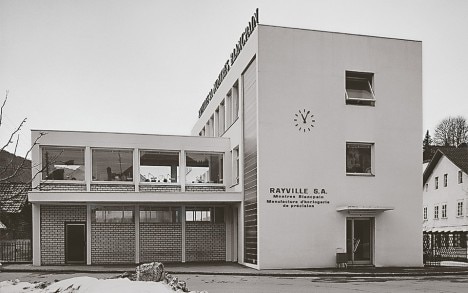
Villeret workshop, circa 1963. The name “Rayville” was used by Blancpain for several years following the death of the last member of the Blancpain family actively working for the business. Swiss law required the name change.
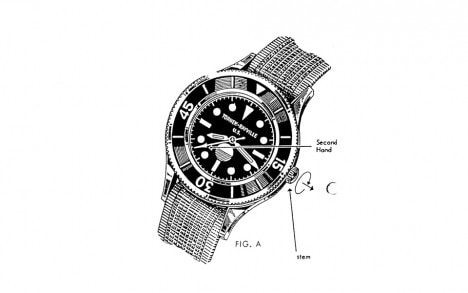
Betty was a DOMINATING FIGURE both in personality and physical stature. Yet at the same time she was HUMBLE, close to her employees and, most of all DEVOTED TO HER EXTENDED FAMILY.
Betty also had penetrating marketing insights. She perceived the relative vibrancy of the United States economy in comparison to other areas of the globe and made it her focus by developing close partnerships there for the sales of women’s timepieces. In order to avoid punitive tariffs which would apply to completed watches, she cleverly built a significant and successful business selling nearly fully completed watches (movement, dial, hands) mounted within an inner case, leaving it to her purchasers to fashion their own exterior cases within which to place the Blancpain ensemble.
Her business style was one of no nonsense and she did not brook those who crossed her. In a word, she was a dominating figure both in personality and physical stature. Yet she was at the same time humble and extremely close to her employees. Not only did she know all of those in the workshop, she made the effort to know their spouses and children. It was her practice to give each one of her employees an important gift every year. It might be a serving platter or another silver object; always, however, it was something meaningful. Imagining ways to embrace her employees which would not become common elsewhere in the business world until many decades later, she built the Square Rayville, a recreation area where their children could play in safety. The dominant employer in Villeret, she also came to be revered for the special gatherings and celebrations that she organized for her workforce. Betty never married but she built a family around her. There was a strong sense of family that grew from her closeness to her Blancpain employees, but even more so was her devotion to her nephews and their children. She was closest to her nephew Jean-Jacques Fiechter. Jean-Jacques is the son of Betty’s brother, Jacques-René Fiechter, a poet of considerable renown in Switzerland. During World War II, Jean-Jacques lived with his parents in Alexandria, Egypt. His return to Switzerland came in 1945 as he sought to continue his study of history at the University of Lausanne with the goal of earning a doctorate degree and becoming a professor. Of course, Betty fully supported him in his studies. Everything changed in 1950 when Betty fell ill with her first bout of cancer. For her there were two possible outcomes: either Jean-Jacques would join with her to assist in managing Blancpain or she would sell the enterprise. Notwithstanding having no particular background in watchmaking or the business side, Jean-Jacques chose the former, beginning what was to become nearly a two-decade joint management partnership with his aunt. Betty wisely tutored her nephew and rotated him through all the phases of Blancpain’s operations: production, finance, sales, and distribution.
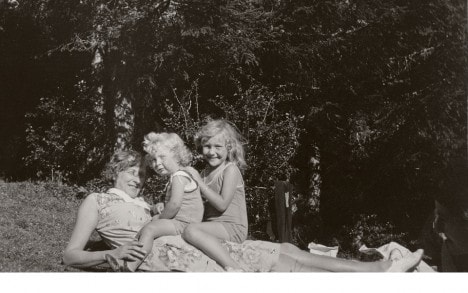
Betty with young Jean-Jacques and his sister, Nicole.
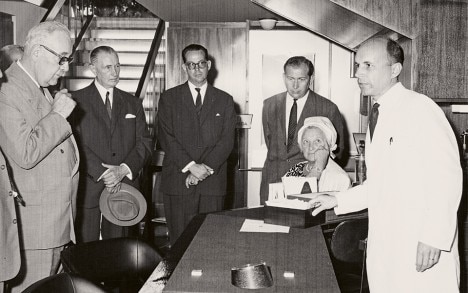
Betty and Jean-Jacques at the opening of the Les Ambassadeurs boutique in Geneva in 1965.
Betty and Jean-Jacques’ working relationship witnessed enormous triumphs: the creation of the legendary FIFTY FATHOMS, THE LADYBIRD, AND MARILYN MONROE’S BLANCPAIN EVENING WATCH .
production, finance, sales, and distribution. Their working relationship witnessed enormous triumphs with the creation of the legendary Fifty Fathoms, the Ladybird women’s watch, the creation of Marilyn Monroe’s Blancpain evening watch, and the growth of Blancpain’s production to over 200,000 watches and watch movements per year. There were many watchmaking firsts that accompanied and enabled these accomplishments. Their collaboration developed the world’s smallest round movement (11.85 mm diameter) used in the Ladybird. Not only was the movement notable for its record-breaking small diameter, it surpassed other small women’s movements in robustness. The innovation that achieved this remarkable combination of petite size and sturdiness was the addition of an additional wheel in the gear train. As well during this era, Blancpain was a pioneer in offering women’s watches featuring the winding crown placed on the back of the timepiece. This enabled designers to offer especially elegant profiles for feminine watches. Baguette movements, likewise of an extraordinarily petite size (7x18.6 mm), became a Blancpain specialty during this era. The towering achievements of the Fifty Fathoms have been chronicled in these pages which recount the many patented innovations and keen insights that led to its creation and its earning of a preeminent place in the history of diving watches.
Jean-Jacques was not alone in joining Blancpain. His two brothers René and Georges were also given roles by their aunt. René aspired to build his life in America. Betty charged him with building the market for Blancpain. His efforts led him to meet Allen V. Tornek, who became Blancpain’s U.S. distributor and who later was instrumental in securing Blancpain’s contract to supply Fifty Fathoms MILSPEC watches to the United States Navy. Georges was assigned a different role by Betty. He and his wife were given the task of building the South American markets.
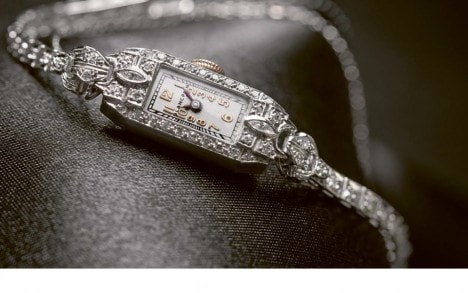
Marilyn Monroe's Blancpain.
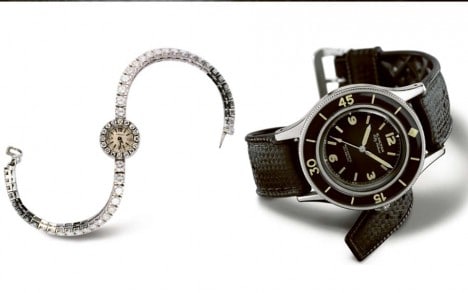
One of the many jewelry versions of the Ladybird, along with a Fifty Fathoms.
As much as she embraced her nephews, giving them important roles within Blancpain, she positively doted upon their wives and children. Shortly after René married, having met his wife on his transatlantic crossing, a large truck arrived at their new home, overflowing with fine furniture chosen by his aunt. That event followed earlier gifts of jewelry for his bride, confirming Betty’s belief that to be properly turned out a woman needed jeweled accents. At birth, each child in her extended family was gifted a single complete monogrammed silver place setting. Upon reaching maturity, each of the children were given a still more important gift: a Blancpain timepiece.René Fiechter’s son (René 3rd) still treasures his gift from Betty, a very special ultrathin Blancpain evening watch. It boasted a 12-hour power reserve, which Betty considered more than sufficient. “Why would a gentleman need more for an evening watch?” More important than the gifts, however, was the way she devoted herself to their upbringing, more like a grandmother than a great-aunt. René 3rd recalls being present at important Blancpain business meetings that were held at Betty’s home, which she named “En Chandré,” located in Pully, a suburb of Lausanne. Betty insisted that he be present at the table and, notwithstanding the weighty issues being discussed, her eyes took in everything, including whether his elbows were on the table…forbidden. Holding business meetings with her nephew’s children present did have its moments. During one management meeting, René discovered a mysterious valve in the basement of Betty’s home. The temptation to turn it was overpowering. It also brought the meeting to a halt as it propelled a large garden fountain into overdrive, soaking Betty and the management team.
She naturally established rituals and traditions. At Christmas, all of the children were expected to sing and perform, one by one, for the gathered family. There were limits, too. One room in her Lausanne house, filled with rare antiques and artifacts, was forbidden to the children. When René 3rd’s younger brother broke the rule (fortunately none of the priceless objects were destroyed) but admitted his violation to her, she rewarded him with a model sailboat for his honesty. Discipline, manners, tradition and rules were one thing, but so was pleasure. When she sensed that a management meeting seemed to be dragging, spur of the moment, Betty snatched up children and the management team for go-karting. Off they went, Betty settling into her kart wearing her jewels and formal attire, with her management team, equally attired in business garb, forming into a line at the rear – whereupon she roared off in the wrong direction, her coattails levitating behind her as the bemused team and children looked on. On another occasion, after spending time with Jean-Jacques’ family in her home in Cagnes-sur-Mer on the French Riviera, she announced that his son, Jean-Marie, was overdue for his first trip on an airplane, so she whisked him away for the two of them to fly from Nice to Geneva.

An advert from the time of its release, in 1956.
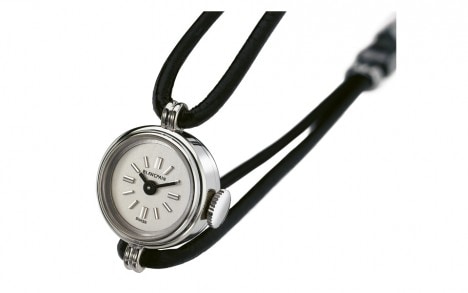
The Ladybird.
Christmas 1968
My dear friends,
Once upon a time, said the fairy stories of my childhood… I am picking up these words to say: once upon a time, in 1932, amid a severe watchmaking crisis, there was a small group of friends – some of whom are here this evening – who had faith in both my associate and in me and demonstrated this trust by enabling us to acquire BLANCPAIN and thus create RAYVILLE S.A.
In saying my goodbyes this evening, I would like to thank them from the bottom of my heart. All of us will remember the face of my associate Mr. André Léal. They will recall the very dark days that by sticking together, we succeeded in making progressively brighter and in the end truly radiant! I would also like to thank them for having continued to trust me after the sudden passing of Mr. Léal.
Many years have gone by since then…
Today, my nephew Mr. J.-J. Fiechter has expressed his willingness to take entire charge of RAYVILLE S.A. I will remain President, an honorary title that is precious to me, as it will enable me not to bid a definitive and irrevocable farewell to a life of endeavors which, as I said before, you have all helped me to navigate cheerfully with your trust, friendship and understanding.
While circumstances prevent me from saying goodbye in person as I would have wished, I would like to emphasize my gratitude for the fact that during my enforced immobilization, you have supported me with your visits, flowers, and phone calls, as well as spoiling me with the beautiful book you have gifted me.
One does not take leave of a job to which one has dedicated one’s entire life without sadness and tears. Please know, however, that despite the latter, I am smiling at you all, both past and present, while wishing you a Merry Christmas and a very Happy New Year. Rest assured that under the guidance of Mr. J.-J. Fiechter and his closest associates, RAYVILLE will continue on the upward trajectory of the past years, and that day after day you will congratulate yourselves on being both one of the cogs in the wheels of this uplifting mechanism and one of the beneficiaries.
Once again, Merry Christmas to all of you.
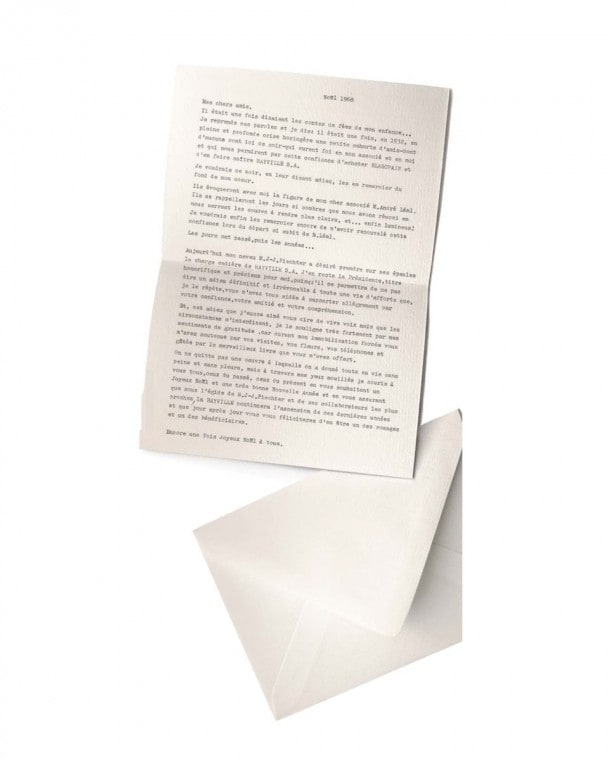
Betty Fiechter’s 1968 Christmas message announcing the reduction in her role to that of honorary President and reflecting on the more than three decades that passed under her full stewardship.
Truly she was a WOMAN OF CONSEQUENCE whose legacy remains vital to Blancpain today.
The trifecta of crises that marked the beginning of her ownership of Blancpain were followed later in her career by other daunting challenges. World War II obviously put enormous pressure on the business, but far worse were the general commercial setbacks that arrived in the late 1960s, as competition from Asia and quartz rocked the entirety of the Swiss watch industry. Betty together with Jean-Jacques engineered a merger of Blancpain with Omega, Nouvelle Lemania and Tissot into an entity called SSIH (Société Suisse pour l’Industrie Horlogère). Each watch house kept its own identity but pooled resources in order to maintain and expand production efficiently. Of course, Betty served on the board of this new company. She continued to host meetings, preferring either her home near Lausanne or her secondary residence on the French Riviera. Blancpain played a major role in SSIH as the source of movements for the combined brands.
As imposing a figure as she was in leading Blancpain and later SSIH, she equally became a notable presence in the art world and in both Lausanne and Cagnes-sur-Mer, strolling about or dining in the finest restaurants. Her tastes were sophisticated, as she collected Aubusson tapestries, Picassos, Renoirs, and ancient icons, some of which she showered upon her extended family as gifts. Out on the town in Lausanne, her taste in refined clothes and jewelry matched her artistic passions, leavened with a touch of eccentricity. Always elegantly dressed, with furs in winter and decked out with jewels, she included in her ensemble pink terry cloth bedroom slippers as she suffered chronic foot pain.
Betty passed away in early September 1971 in Bienne with two touching codas to her life. On her death bed she penned a birthday note to her great nephew Jean-Marie, which was delivered after her passing on his birthday which fell at the end of the month. For her village of Villeret, she dedicated a large parcel of land in Les Planches, the site of today’s monument, to be preserved as open space or for recreation.
Few women could have matched her achievements. At a time when women were not a force in the Swiss business world, she not only succeeded but did so in the face of formidable obstacles. She found her own unique path which involved deep respect for tradition yet embraced modernity. Truly she was a woman of consequence whose legacy remains vital to Blancpain today.

Other issues
Don't miss the latest issue
Sign Up for New Releases